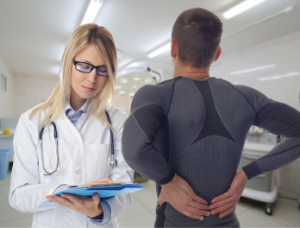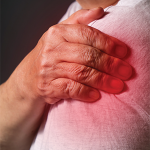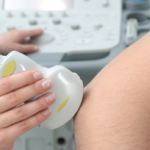
Albina Glisic / shutterstock.com
SAN DIEGO—At two sports medicine talks at the 2017 ACR/ARHP 2017 Annual Meeting last November, two rheumatologists discussed shoulder impingement and low back pain. First, Andrew Concoff, MD, a rheumatology and sports medicine specialist at St. Jude Medical Center in Fullerton, Calif., gave these five shoulder impingement tips:
- Physical exams may not be very useful because many of them can indicate multiple shoulder conditions. The Neer test, for example, can point to supraspinatus tendinopathy, a full-thickness supraspinatus tear or subacromial impingement.
- Clinicians must learn whether an injury was macrotrauma (e.g., a sudden major injury of some kind) or microtrauma (e.g., the cumulative effect of smaller motions). Also important is whether the injury is to the dominant shoulder, because patients can tolerate an injury on their nondominant side easier than their dominant side, and because rotator cuff tear repairs tend to perform better on the dominant side. Clinicians also must know their patient’s demands: Will they engage in a lot of potentially problematic overhead activity, for example, or in such activities as bowling or gardening, which people can tolerate well even with major rotator cuff tears?
- Scapular dyskinesis (SD), or abnormal shoulder movement, is best handled with physical therapy (PT) that targets SD. “If we focus on stabilizing the scapula, we can actually improve things to such an extent that even five years later, with the same program, [patients] randomized to specific scapular exercises continue to not want surgery,” he said.1
- Studies have found no difference in outcomes between operative and non-operative approaches to symptomatic, atraumatic, full-thickness rotator cuff tear, so initial PT seems appropriate, Dr. Concoff said. “This is why I like to know up front if somebody has or doesn’t have a rotator cuff tear, and then I like to know if it’s traumatic or not,” he said.
- Ultrasound provides good, positive predictive value for full-thickness rotator cuff tear, similar to that of MRI. Plus, it costs less than MRI, patients prefer it over MRI and it also allows better injection accuracy and outcomes. “Ultrasound works very well in this scenario,” he said. Leveraging ultrasound in this manner represents one piece in a larger effort toward “value-driven redesign” of both orthopedic and rheumatologic musculoskeletal care.
Low Back Pain
In another sports medicine talk, Jean Gillies, MD, a clinical instructor of rheumatology at the University of British Columbia in Vancouver, discussed the need for a better approach to low back pain. Too often, she said, it’s simply called “nonspecific low back pain,” which doesn’t help clinicians determine a treatment course, she said.
Her approach to low back pain began to change in 1991, when she saw a study that found that 60% of patients seen at a United Kingdom outpatient rheumatology clinic for low back pain had tenderness on palpation at the medial end of the iliac crest. She doubted that result, but then she tested it herself on her own patients.
“Sixty percent of the patients I’m seeing had pain at the medial end of the iliac crest,” she said. And they all had temporary resolution of their pain with an injection of lidocaine.
What we need is a paradigm shift.
Far more cases than recognized, she said, are on the mechanical enthesitis spectrum. Three common causes of low back pain include iliolumbar ligament enthesopathy, sacrotuberous ligament enthesopathy involving the two major ligaments controlling the sacroiliac joint, and paraspinous process enthesopathy involving the fascial attachments of the multifidus and the thoracodorsal fascia, she said.
The problem has to do with tensegrity, an engineering concept that features prominently in bridge design and involves the tension of cables and the compressed bars and struts that fit over them. The spine, supported by a network of tendons and muscles, has a similar structure, with ligament, fascia and tendon attachment sites—that is, sites of tension and compression.
“And that’s where you get a problem,” Dr. Gillies said.
Patients with this kind of problem can’t sit or stand still, can suffer morning stiffness lasting up to an hour and are helped by walking. The main treatment: strengthening the core, she said.
She hopes clinicians get out of the habit of resorting to the phrase, “nonspecific low back pain.”
“My opinion is that nonspecific low back pain is not a useful diagnosis,” Dr. Gillies said. “What we need is a paradigm shift.”
Thomas R. Collins is a freelance writer living in South Florida.
Reference
- Bjornsson Hallgren HC, Adolfsson LE, Johansson K, et al. Specific exercises for subacromial pain. Acta Orthop. 2017 Dec;88(6):600–605.

